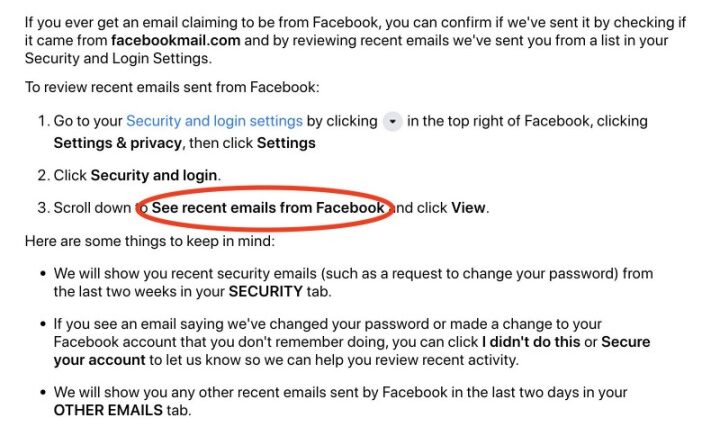FACEBOOK keeps a list that could reveal if you’ve been the victim of a phishing scam.
Phishing attacks – scams where attackers send malicious emails to trick you into handing over sensitive information – are on the rise.
Last year, the number of attacks on Americans reach half a billion, according to Kaspersky, doubling from the previous year.
And one of the most common ways that email fraudsters will trick you is by posing as a social media site that you’re already receiving legitimate emails from – such as Facebook.
For Facebook users in the know, there’s a handy trick to determine if you’ve been victim of a Facebook phishing email without realizing.
The list is also a great way to verify in incoming email that’s raising red flags.
Maybe you’ve received a message from an address proclaiming to Facebook but it has a questionable subject line, or the address is something illegitimate looking like “[email protected].”
If want to double-check before you proceed, this is just the trick for you.
How do I access it?
On your Facebook profile, click your face at top right, then choose Settings & Privacy > Settings.
Near the top left you should find Security and Login. Select this, and scroll down to the Advanced section.
Most read in News Tech
Click the item titled: “See recent emails from Facebook.”
If you see a match for the dodgy message’s subject line, it’s almost certainly legitimate. But if the subject line isn’t there, you’ve been targeted by a fishing scam.
Ensure you look both lists, including the Security-related messages and in the list titled Other.
If you’ve received a phishing email, your address has gotten into the hands of internet scammers, and you should remain cautious of further emails with questionable requests, subject lines or addresses.
How else can I verify a fake Facebook email?
There are other clues to look out for when deciding if you’ve received a bogus Facebook email, PCMag reports.
You can have a quick scan online for information about the sending domain address.
Check all links in the message to make sure they link to safe pages.
Scan the email header to check if the sender’s address wasn’t “spoofed,” meaning a hoax.
To do this in Gmail, click the “More” symbol – three vertical dots – to the right of the Reply icon, and select “Show Original.”


This will show if the message passes three tests designed to detect spoofing.
If the emails passes these tests and it doesn’t show up in Facebook’s list, you can trust on that it’s legitimate.









